American anti-tank artillery in World War II
The creation of anti-tank artillery in the United States began only at the end of the 30-s. Prior to that, anti-tank companies of infantry regiments were armed with large-caliber 12,7-mm machine guns Browning М2. In the divisions of the Marine Corps, in addition to large-caliber machine guns, it was planned to use the old 37-mm infantry assault guns M1916 to fight armored vehicles.
Despite the considerations of military experts about the need to develop and adopt specialized anti-tank guns, only the civil war in Spain was the impetus for changing the current situation. In 1939, the US Army Armaments Department decided to develop a new anti-tank gun. The German 37-mm Pak 35 / 36 had a great influence on the appearance and design of the designed tool.
The generals wanted to have a light gun in service, which could easily be rolled by the forces of calculation, so the sensible idea of increasing the caliber compared to the German prototype was rejected. Despite the fact that the German Pak 35 / 36 anti-tank gun served as the starting point for the development of the American M37 3 anti-tank gun, it was significantly different from the German model.
The American M3 cannon had a different bolt and carriage, as well as a longer barrel with a different rifling pitch. M3's ammunition was non-interchangeable with the Pak 35 / 36. In an attempt to reduce the effect of the rollback on the frame, the gun was supplied with a muzzle brake, renamed МХNUMXА3, but soon it was abandoned because of uselessness - the return of the 1-mm gun was small and quite normally perceived by recoil devices. In addition, the damping muzzle brake during firing sent part of the powder gases to the side and bottom, which led to dusting around the gun, made it difficult to observe and unmasked the position. To increase reliability, the main axis of the frame has become wider. The armor shield was small and flat.
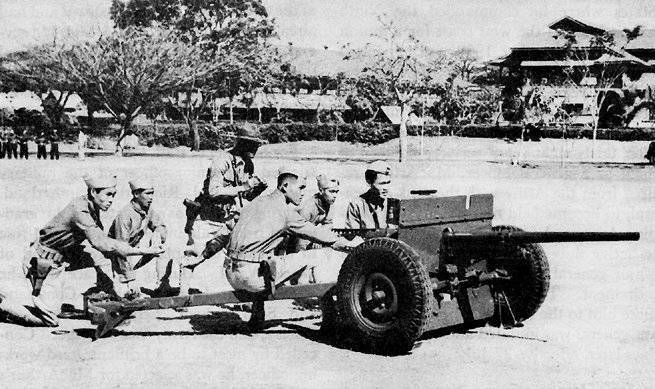
Gun carriage with sliding beds and wheels with pneumatic tires. Behind the wheels, the “wheel segments” were mounted on the axles - figured stops that, in a combat position, went down and ensured the stability of the gun when firing, and in the stowed position they rose to allow the gun to move freely.
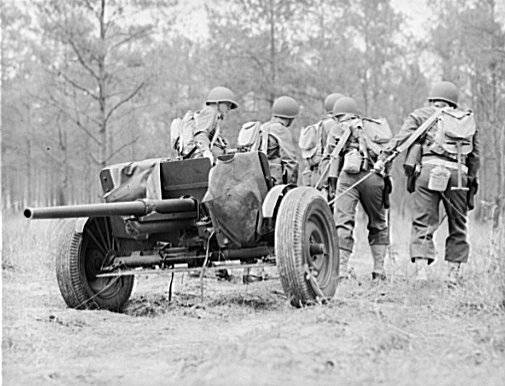
In contrast to the British 40-mm anti-tank 2-pounds for the American 37-mm guns M3 a wide range of ammunition for various purposes was developed, which certainly increased the combat value of the gun and the flexibility of its use.
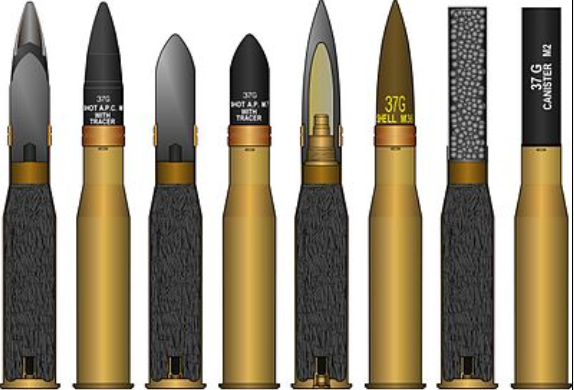
The ammunition included high-explosive fragmentation and firing shots, but the main course was armor-piercing shells. The first shell of this type was the AP M74 Shot, weighing 0,87 kg with an initial speed of 870 m / s. At a distance of 450 m, this projectile normally pierced 40 mm armor. Later, an APC M51 Shot with a ballistic tip was adopted, the armor penetration of which increased to 53 mm. In an attempt to increase the M3's armor penetration capacity, after 1942, various versions of the adapter nozzles with a conical barrel were developed. Some of them (including the British serial adapter “Littlejohn”) were tested by shooting, but none were adopted. According to the characteristics of armor penetration, the American 37 mm M3 anti-tank gun could only effectively fight tanks, protected by bulletproof armor and approximately corresponded to the data of other foreign guns issued in the mid-30s.
Mass production of anti-tank 37-mm guns began only in 1940 year. Before 1943, more than 18000 37-mm M3 and M4A1 guns were released. The upgraded version of the M4A1 gun was distinguished by a fuse and a horizontal aiming mechanism.
According to the 1941 staff, each infantry regiment had an anti-tank company with nine guns of this type, and each infantry battalion had an anti-tank platoon with three 37-mm guns.
The heavy Dodge WC51 jeeps, known in the USSR as the Dodge Three-Quarter, were originally intended as tractors. But a large number of units received instead a lightweight Jeep Willys MB. Traction developed by "Willis", it was enough for the transport of guns.
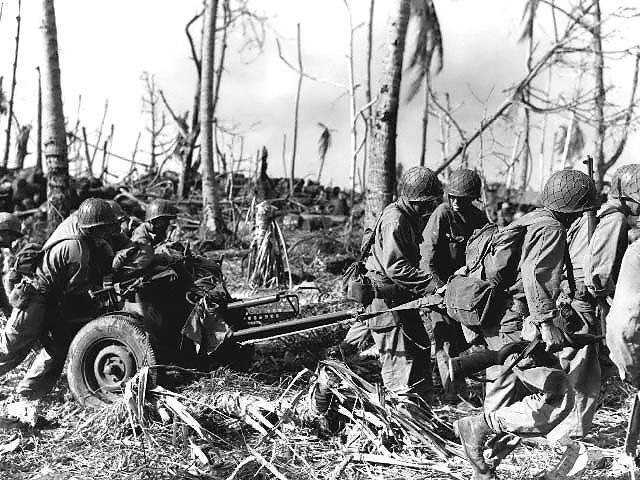
For the first time in combat, the 37-mm guns of the M3 were used at the end of the 1941 of the year during the Japanese invasion of the Philippines. They proved to be very effective against a few Japanese armored vehicles protected by anti-bullet armor. With a weight of about 400 kg, the gun could move and disguise itself by the calculation forces, which was especially important in off-road conditions on the islands overgrown with jungle.
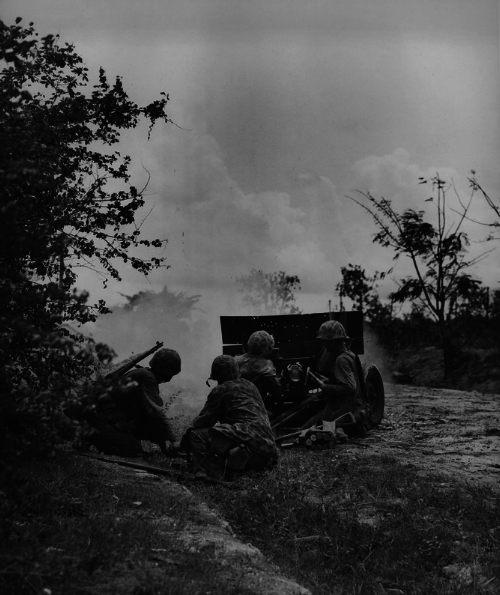
Therefore, the M37 3-mm gun remained in service with the United States Marine Corps until the end of the war, being used against tanks and as an instrument of direct support for infantry. In the latter case, the low power of the high-explosive fragmentation projectile weighing 0,86 kg, containing TNT 36 g, significantly limited the effectiveness of the gun, but against the massive attacks of the Japanese infantry, the M3 bullet shot with 120 steel bullets proved well.
Often, in parts using the M3 guns, the shield cover was replaced with a taller and thicker cover providing protection from rifle bullets. Some parts of the US Army used M3 in Pacific theater until the end of hostilities.
In Asia, 37-mm guns proved to be quite an effective anti-tank weapon, but the battles in North Africa gave a completely different assessment of the qualities of the M3 cannon. That, however, is not surprising: the gun was outdated at the design stage, it corresponded to the realities of the early 30-s and was unable to confidently penetrate the frontal armor of the later versions of the German medium tanks PzKpfw III and PzKpfw IV.
The battles of summer 1943 of the year in Sicily and in southern Italy also revealed the failure of the guns against modern tanks. If the Italian tanks 37-mm M3 coped, then against the Germans repeated the same situation as a few months earlier in North Africa. In this regard, starting from 1943, 37-mm anti-tank guns began to be withdrawn from the anti-tank units of the units fighting the Germans.
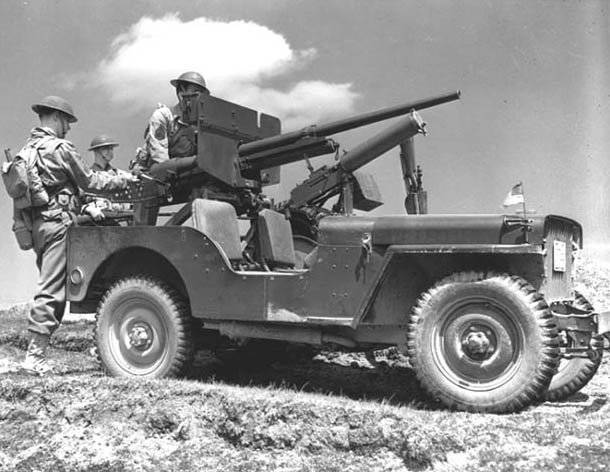
Despite the fact that the infantry units in the second half of the war began to abandon this weapon, it was installed on several modifications of tanks and armored vehicles. In addition, in the United States created a large number of heterogeneous 37-mm wheeled self-propelled artillery installations, designed to increase the mobility of anti-tank artillery.
In the middle of 1943, the Americans turned off the M3А1, replacing it on the conveyor with the 57-mm M1 cannon, which was a slightly modified version of the British 6-pound Mk II. Later there were modifications M1A1 and М1А2, differing in the improved mechanism of horizontal targeting. Before the end of World War II, more than 15000 guns were manufactured by the American industry, of which about 5000 was delivered to the UK.
According to its main characteristics, the American 57-mm anti-tank gun fully corresponded to the British original. Dodge WC62 and Dodge WC63 vehicles with the wheel formula 6x6 were commonly used as a tractor. On the battlefield, the weapon could be transported for a short distance by the forces of calculation.
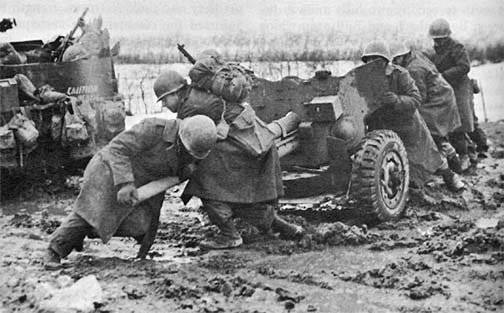
The regimental anti-tank company in the year 1943 consisted of three platoons of three guns each. The US military hoped that the introduction of new weapons into the anti-tank units would close the gaps in the anti-tank defense. But during the battles in Italy, it turned out that the 57-mm M1 guns were able to penetrate an armor-piercing projectile at a distance of 450 m only onboard armor of German heavy tanks, frontal armor could be pierced at a distance of less than 90 m, which led to heavy losses.
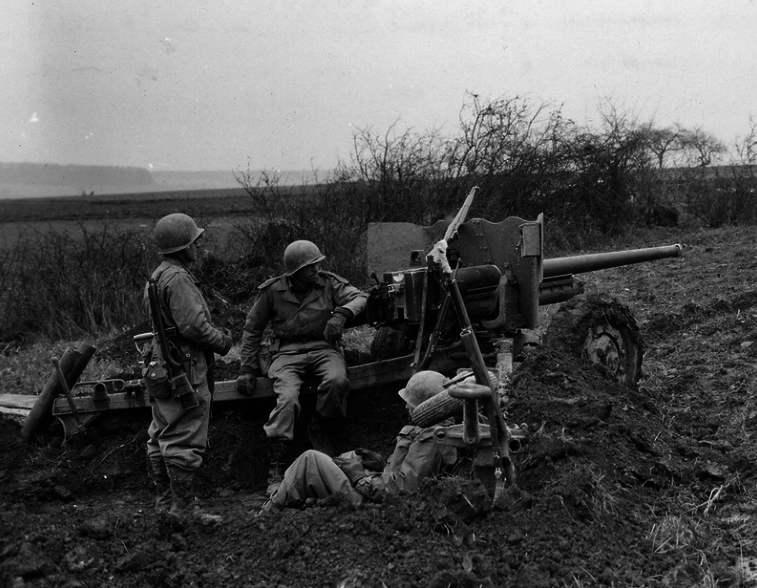
The situation was aggravated by the fact that in the United States no sub-caliber 57-mm projectiles were developed, and the British had to turn to projectiles with increased armor penetration. Soon in the ammunition appeared British shells such as APDS. But such shells in ammunition, as a rule, there were 3-4 pieces, and they were effective at a distance of no more than 450 m. Fortunately for the Americans, there were few heavy German tanks in Italy.
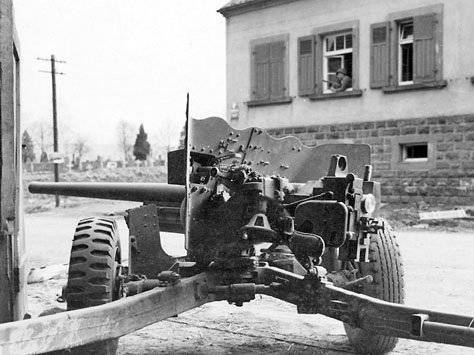
As a result, the fight against German tanks on the battlefield was decided to be entrusted to tanks and specialized tank destroyers, and the M57 1-mm guns supported the infantry with fire more often than they fired at tanks.
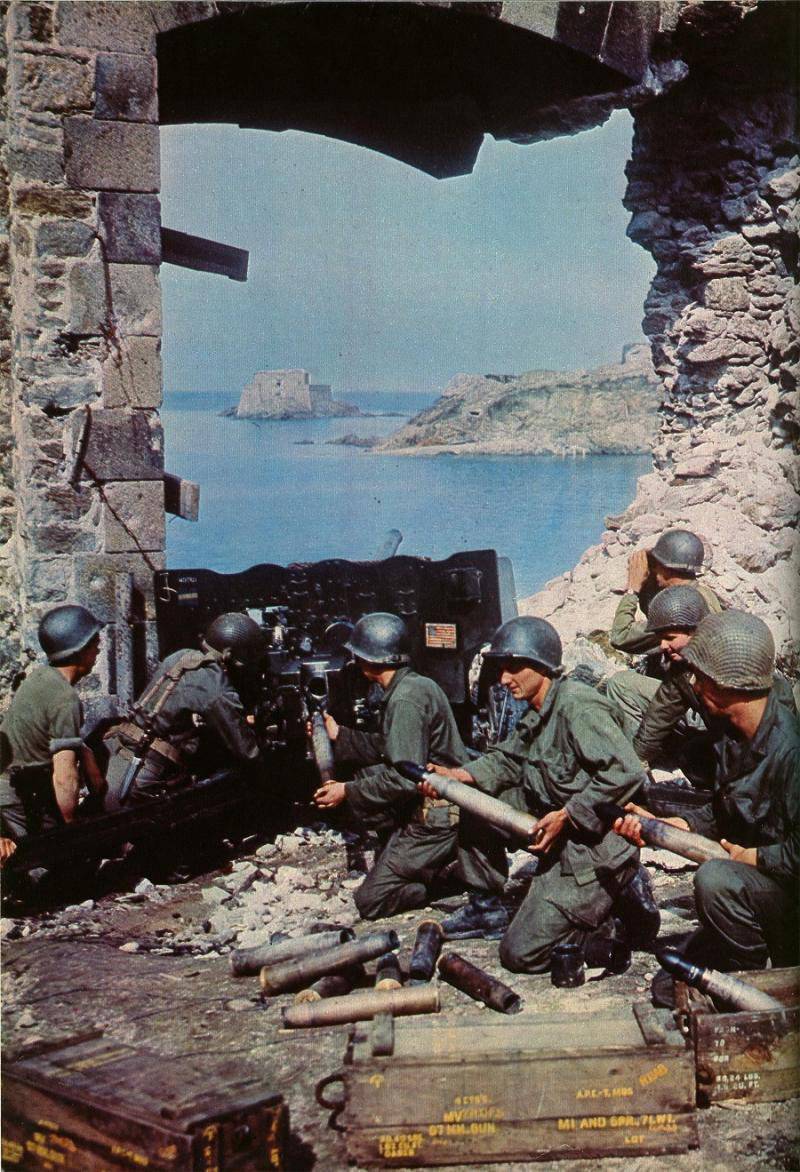
In 1942, in the USA, with the use of the artillery part of the 57-mm guns M1, the production of AT SAU Т48 began.
The anti-tank gun was mounted on the chassis of the M3 half-track armored personnel carrier. The car was produced from December 1942 to May 1943 of the year. A total of 962 T48 was built. Since these machines were not particularly popular in the US military, and because the US military preferred to have better protected and armed self-propelled guns, most of the T48 self-propelled guns were supplied to the British and Russian allies. The USSR received 650 of such machines, where they were renamed SU-57.
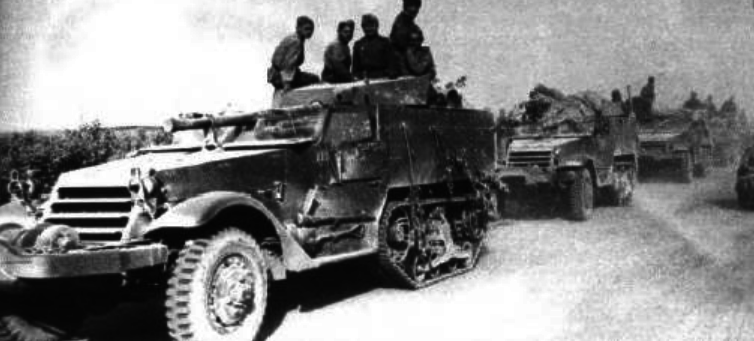
SU-57 mainly entered service in the intelligence units and units of the Red Army. It was in their composition that they were used particularly effectively, being essentially an armored personnel carrier with reinforced weapons. As an anti-tank tool to 1944, the ACS T48 is hopelessly outdated. However, the installations were actively used until the very end of the war, taking part in the Berlin and Prague operations.
Americans learned quickly and were able to learn from what is happening. Having learned about the inefficiency of the British 2-pounder guns, in 1942 on the basis of the 3-inch M3 anti-aircraft guns, they began the development of anti-tank guns. New 76,2-mm anti-tank gun received the designation M5.
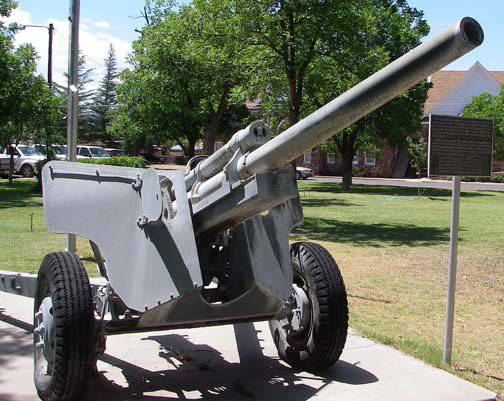
Due to the fact that the developers decided to use new ammunition, the chamber was changed compared to the anti-aircraft gun. In order to accelerate the creation of guns, the carriage was taken from the 105-mm howitzer М101. A straight armor shield was originally preserved on the gun, in later versions it was replaced with an inclined one. The gun turned out quite heavy and massive. The mass in combat was close to 2600 kg, however, it was about 400 kg lighter than the British “seventeen pound”.
The effectiveness of the gun was comparable to that of the British, at a distance of about 900 and an armor-piercing 6,8-kg projectile, which left the barrel at a speed of 792 m / s, pierced 80-mm armor. The rate of fire was 12 shots / min. For the M5 anti-tank guns, several types of armor-piercing ammunition were developed, of which the most common was the projectile with an armor-piercing head (APC), known under the designation M62.
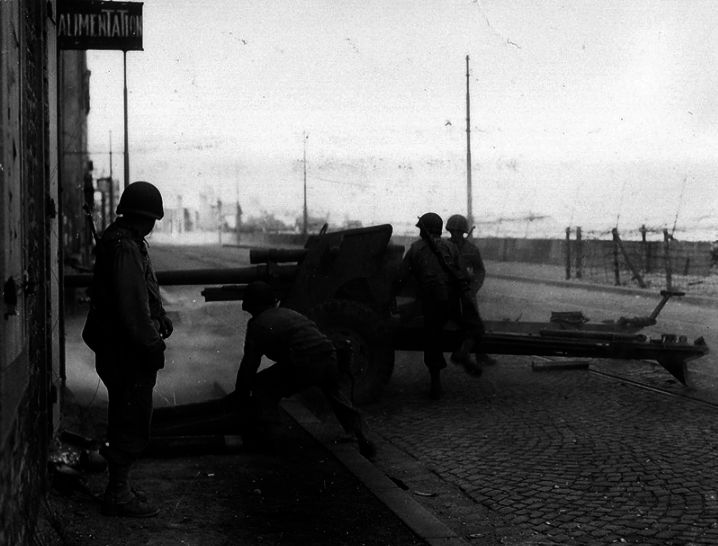
In October 1943, the first guns arrived in Italy, where they took part in the battles, having shown themselves from the best side. Finally, the American gunners received an adequate anti-tank gun, capable of fighting the German heavy tanks. The disadvantage of the M5 was a lot of weight. For towing a gun, it was necessary to use a four-wheel drive three-axle truck, and transporting the implement to the ground with a calculation of seven people was extremely difficult.
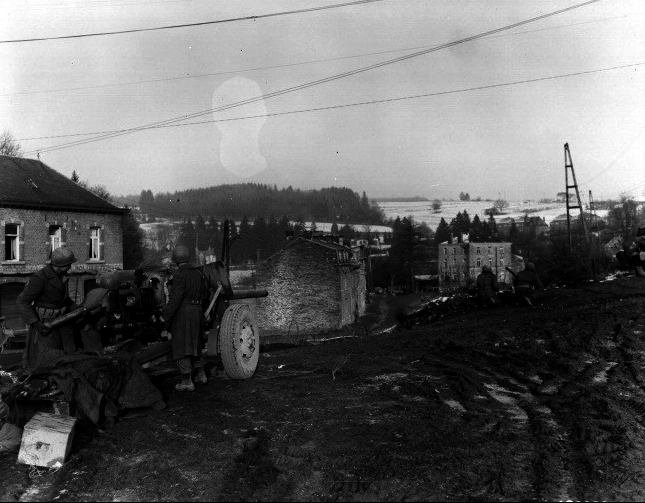
The 76,2-mm anti-tank guns M5 have not been replaced in the army 57-mm gun M3. However, they played a key role in a series of battles. Thus, during the repulse of the German counterattack on Morten in August 1944, anti-tank guns attached to the US 30 Infantry Division destroyed fourteen German tanks and several armored personnel carriers at the cost of losing eleven guns and the complete destruction of several gun crews.
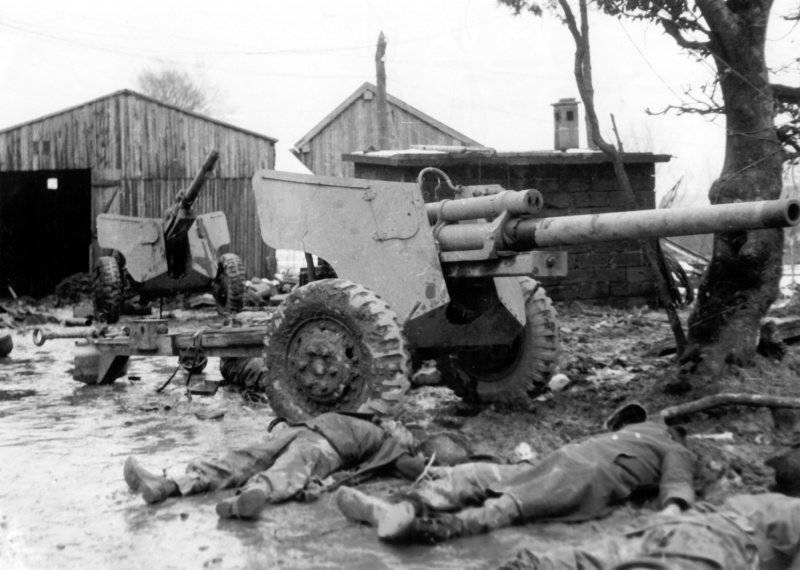
In addition to anti-tank tasks, the M5 guns were very often used as divisional ones. Being at the forefront, they provided fire support to the infantry. Naturally, in these conditions, a cannon servant suffered significant losses from enemy fire.
Wishing to reduce losses and increase mobility, the American command decided to shift the burden of anti-tank combat to specialized anti-tank guns.
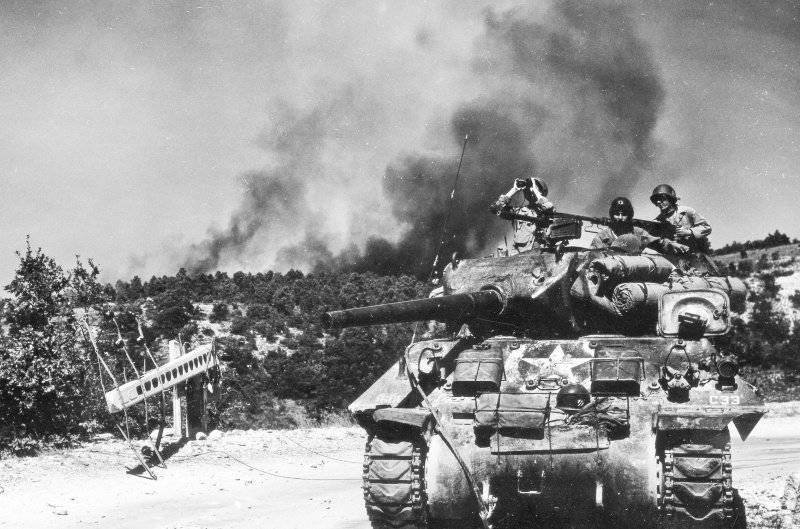
Using the artillery part of the M5, several anti-tank self-propelled guns were created, the most successful of which was the M10 model, which was the chassis of the Sherman tank, on which the M5 gun was mounted in the open-top turret. The American soldiers M10 also had the unofficial nickname "Walverin" (eng. Wolverine - "wolverine"). Total American industry was released 2500 anti-tank guns M5, and PT SAU M10A1 - 6824 units.
In 1943, the 90-mm anti-tank gun entered testing. At the 900 distance, she punched 150-mm armor. The gun was a barrel 90-mm anti-aircraft gun M1, superimposed on the base 105-mm howitzer M101A1.
Several modified guns under the name T8 were sent for military trials. One 90-mm anti-tank gun in February 1945 took part in the fighting. At the same time during the operation of the gun there were serious difficulties during transportation. Taking into account the fact that the weight of the weapon exceeded 7000 kg, and the need for a towed variant was not obvious, the anti-tank 90-mm gun did not go into a large series. The tank version of the gun was used on the PT SAU M36 and tank M26.
After the German anti-tank guns Cancer 1944 and Cancer 43 were captured in 44 in France, work began on the development of tools with similar characteristics in the USA. On the basis of the already existing 90-mm T8 guns, the 105-mm T19 anti-tank gun was created.
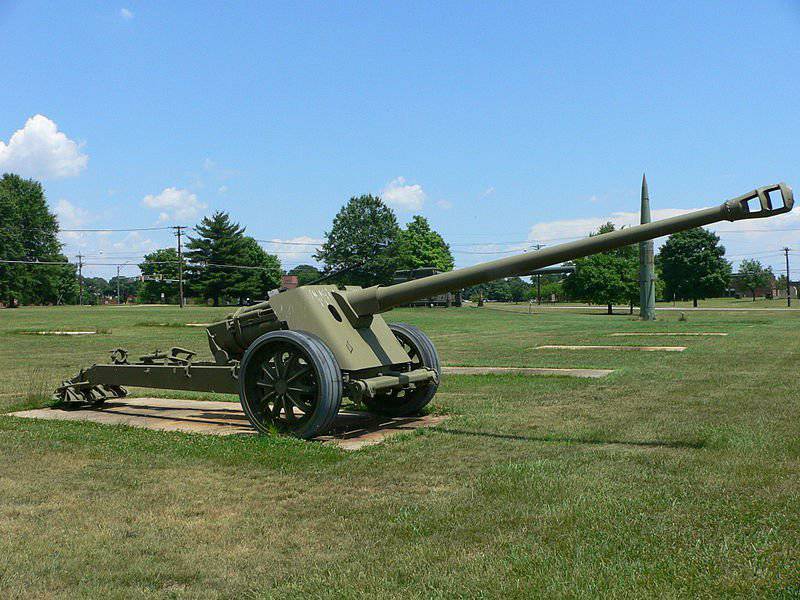
An armor-piercing projectile with a mass of 17 kg left the gun with an initial speed of 945 m / s, punching at a distance of 1000 m along normal 210-mm armor. Despite the excellent characteristics of armor penetration, the end of the war put an end to this development.
Unlike other countries participating in the Second World War, the US armed forces did not use medium and large caliber anti-aircraft guns for anti-tank defense. There are several reasons for this. Firstly, the Americans in Europe had enough other anti-tank weapons, and secondly, the American anti-aircraft guns in caliber from 76,2 mm were quite heavy and cumbersome.
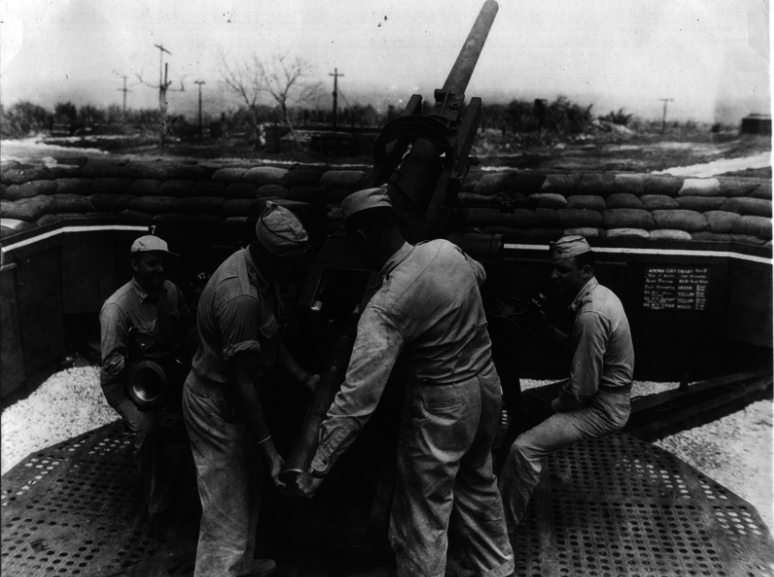
Their deployment and relocation was a very time consuming and lengthy matter for calculations. And the guns themselves did not have aiming devices for direct fire.
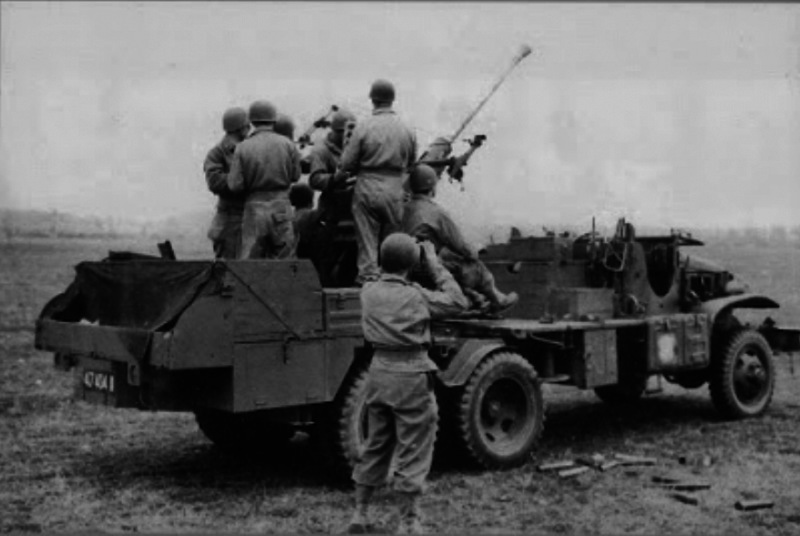
At the same time, 40-mm Bofors anti-aircraft guns mounted on modified 2,5-ton chassis of GMC trucks CCKW-353, were repeatedly used for firing at ground targets. Including German and Italian armored vehicles. 40-mm anti-aircraft guns could penetrate 50-mm homogeneous steel armor at a distance of 500 meters.
The main anti-tank weapons Americans in Europe has become aviation. For all types of Allied warplanes, including heavy bombers, German armored vehicles were "target number 1". Of course, destroying a single Tiger or Panther with a Super Fortress or Liberator bombing was difficult, but these planes coped with the destruction of bridges and railway stations. Allied fighter-bombers acted very efficiently on German transport communications, completely paralyzing all traffic on the roads in the daytime. Often winning a fire duel with anti-tank artillery and Allied tanks, but left without fuel and ammunition, German tankers were forced to abandon fully operational vehicles.
Based on:
http://www.lovettartillery.com
http://olive-drab.com
http://efour4ever.com
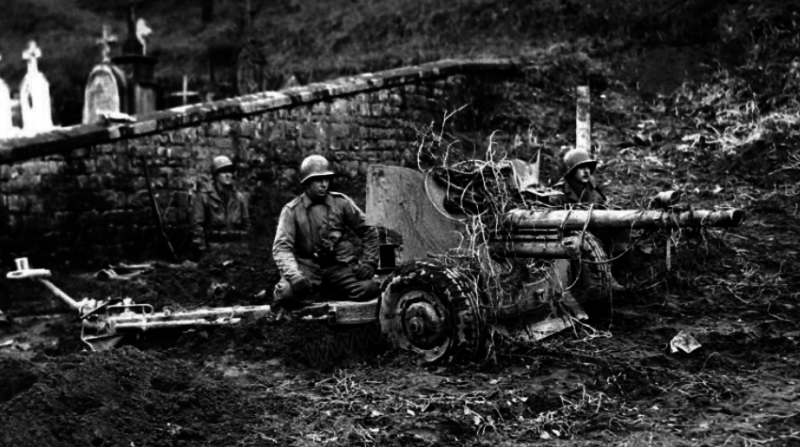
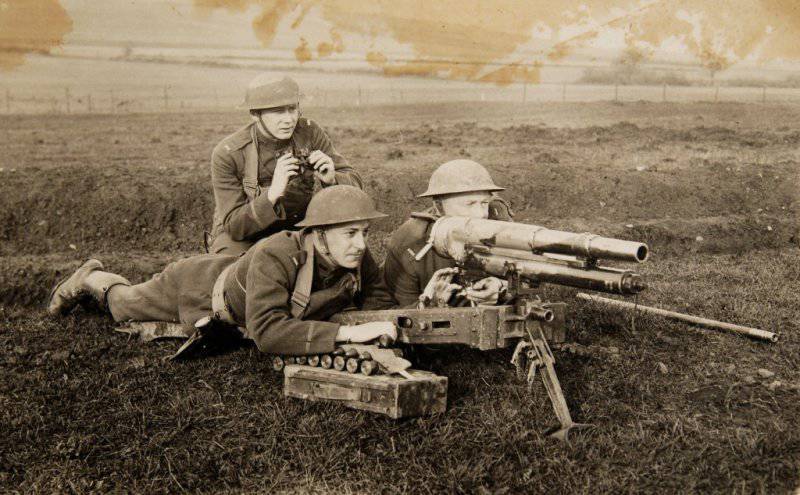
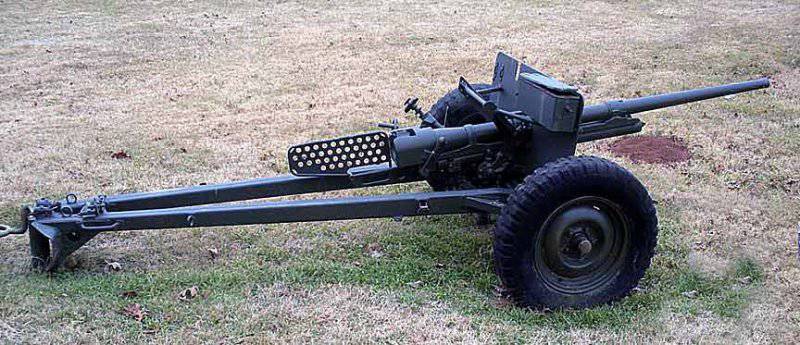
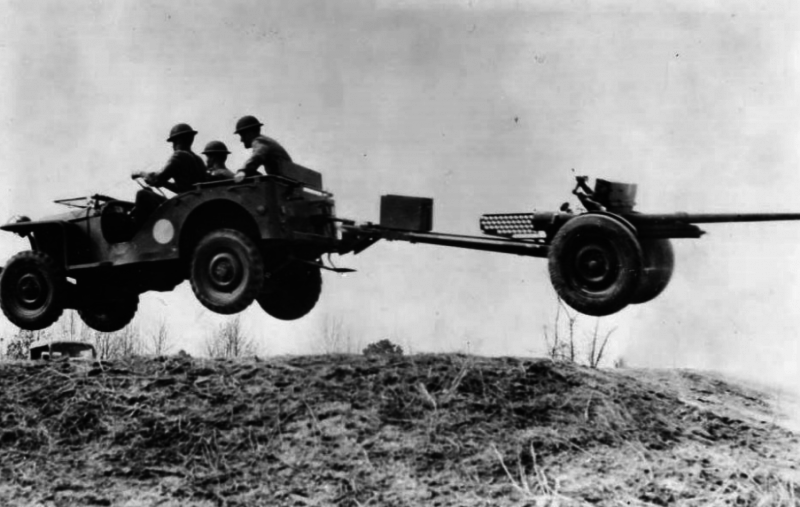
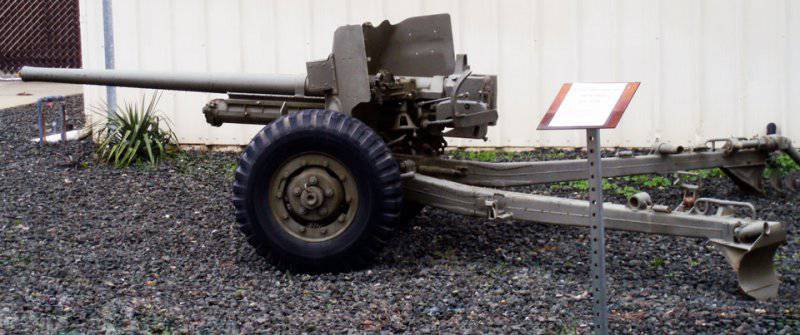
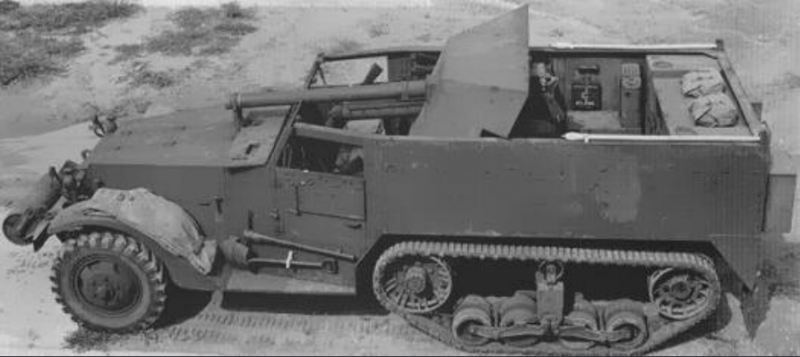
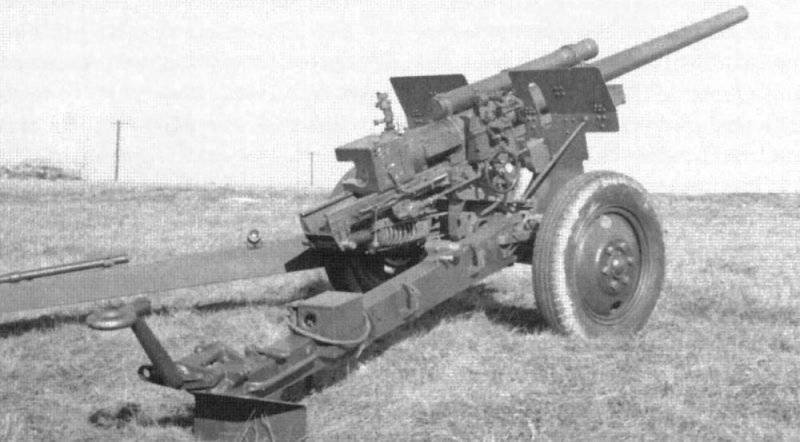
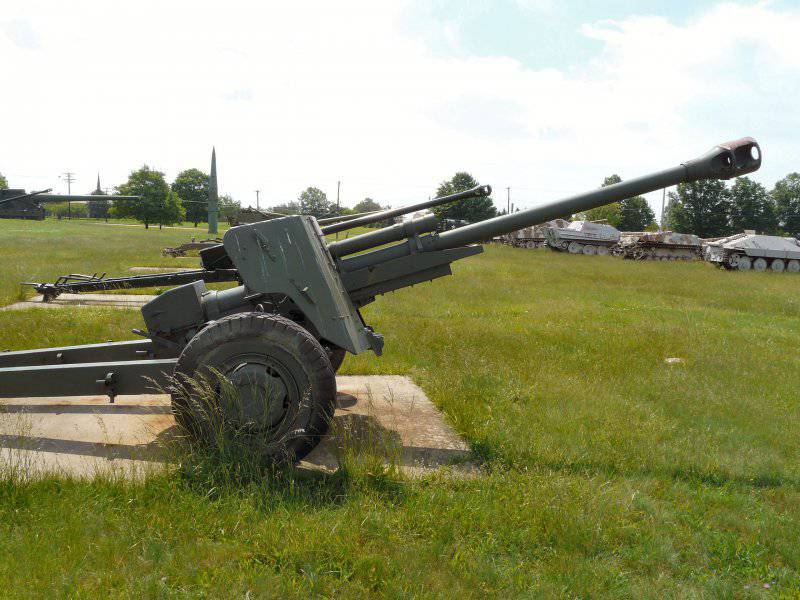
Information